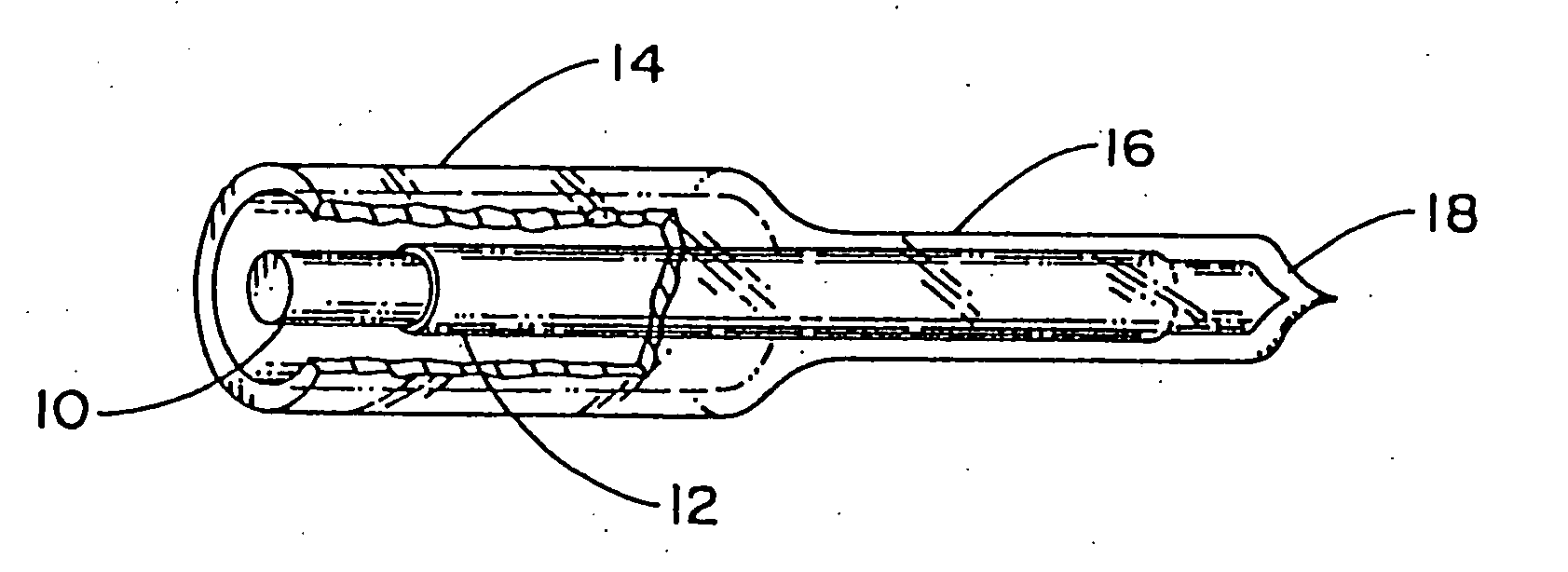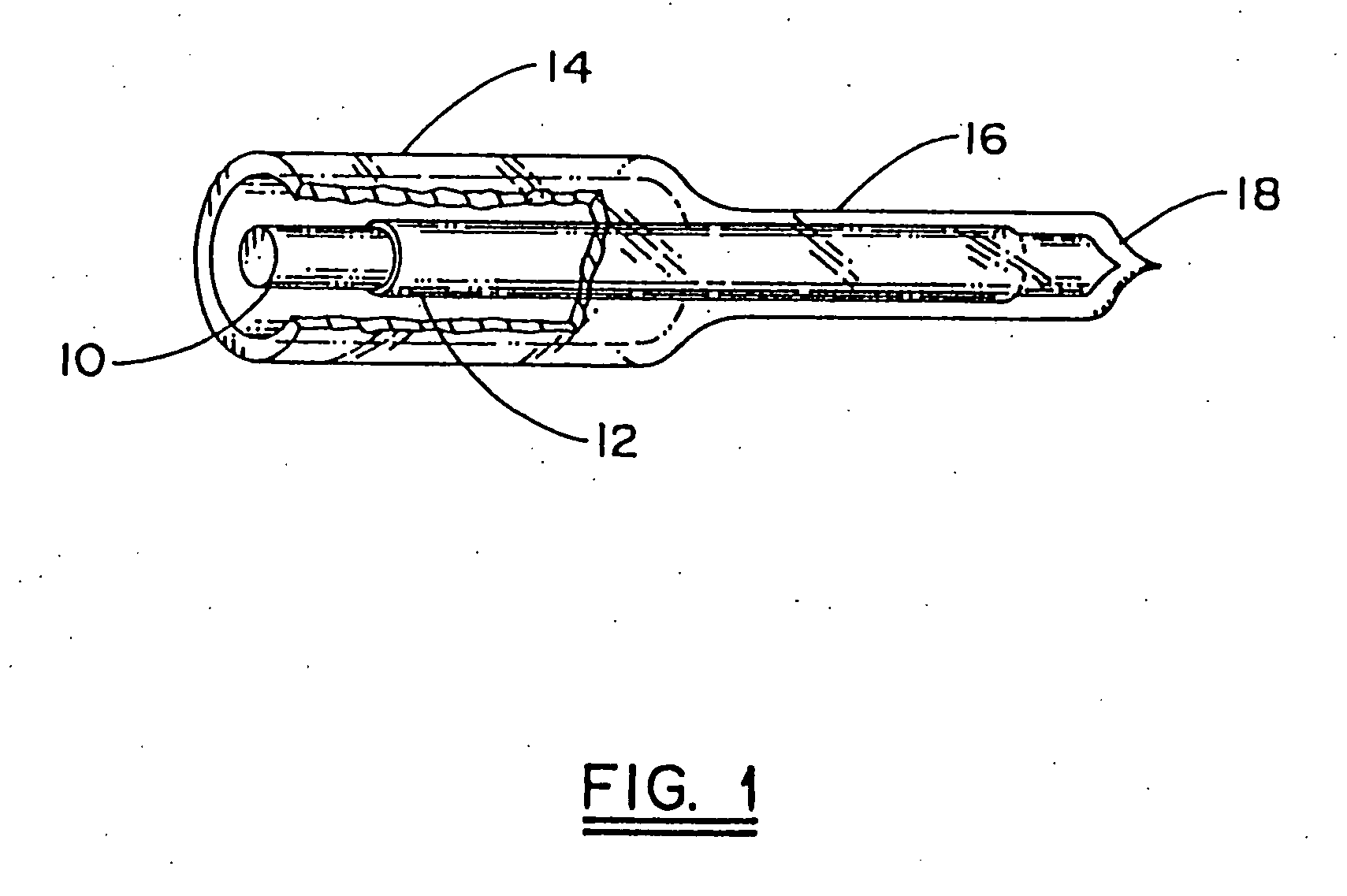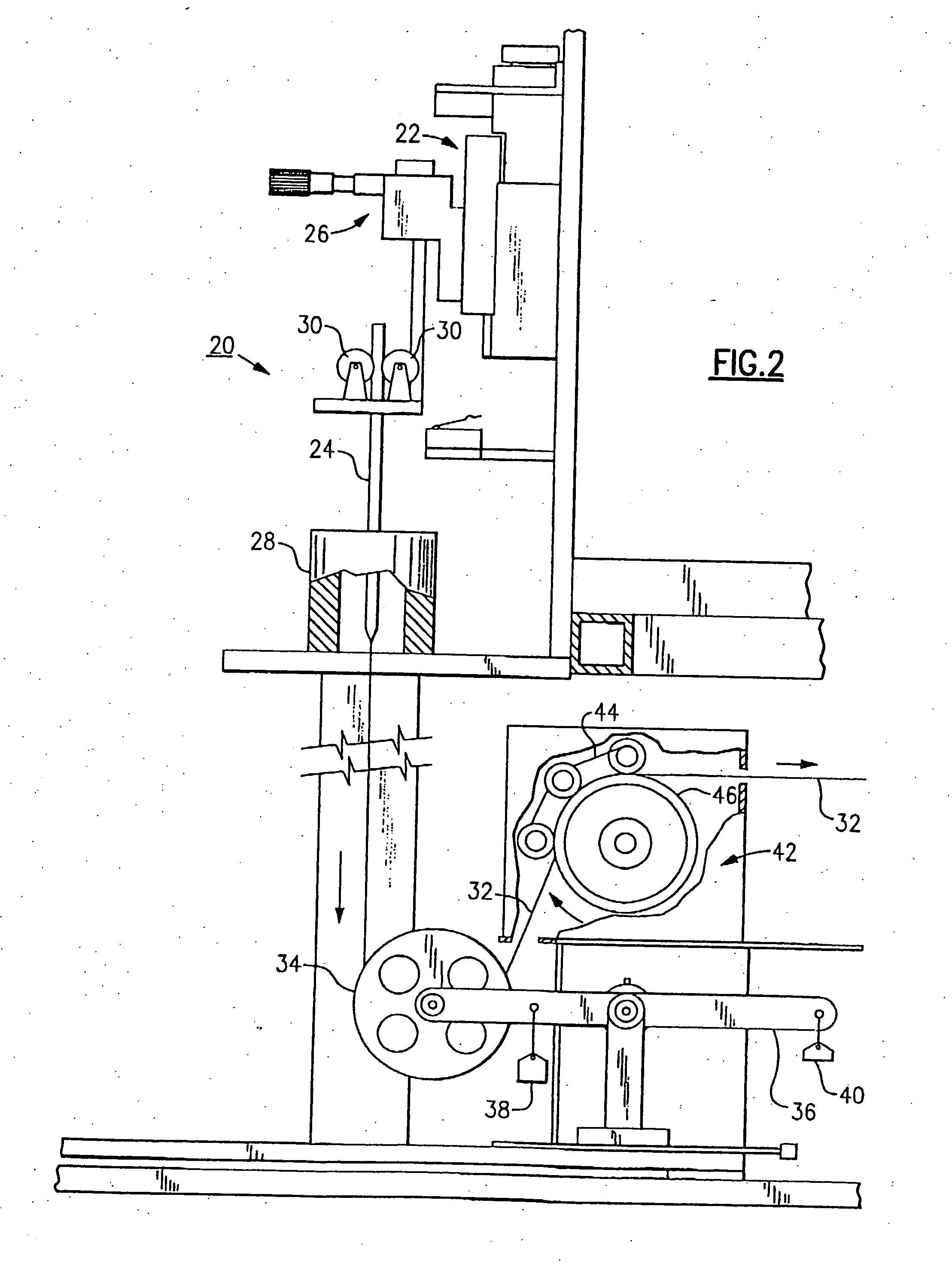Method of fabricating a cylindrical optical fiber containing a light interactive film
a technology of interactive film and cylindrical optical fiber, which is applied in the field of method of fabricating optical fiber, can solve the problems of difficulty, failure to teach exactly how these fibers are to be fabricated, and related prior art that does not teach a reliable method of fabricating fibers
- Summary
- Abstract
- Description
- Claims
- Application Information
AI Technical Summary
Benefits of technology
Problems solved by technology
Method used
Image
Examples
example
[0053] In one embodiment of the invention an AlCu alloy was used as the coating layer. Cu has a melting point of 1086° C., while Al has a melting point of 660° C. Consequently, the melting point of AlCu can be adjusted by selecting the appropriate Al and Cu composition. Appropriate amounts of Cu and Al are selected to yield the desired alloy. AlCu alloys with melting points ranging from 540° C. to 1084° C. can be fabricated.
[0054] The alloy was vapor deposited on a Corning 7740 glass rod. This rod has a softening point of about 750° C. Consequently, it was necessary to use an alloy which contained between 35 and 100 percent aluminum. Preferably, due to a chemical reaction between the glass and aluminum at the softening point of the glass, higher copper concentrations should be used to reduce evaporation of the alloy. Moreover, alloys that are in the liquid-solid phase are generally acceptable since their viscosity would allow the metal to flow during the fiber drawing process.
[005...
PUM
| Property | Measurement | Unit |
|---|---|---|
| diameter | aaaaa | aaaaa |
| thickness | aaaaa | aaaaa |
| melting point | aaaaa | aaaaa |
Abstract
Description
Claims
Application Information
 Login to View More
Login to View More - R&D
- Intellectual Property
- Life Sciences
- Materials
- Tech Scout
- Unparalleled Data Quality
- Higher Quality Content
- 60% Fewer Hallucinations
Browse by: Latest US Patents, China's latest patents, Technical Efficacy Thesaurus, Application Domain, Technology Topic, Popular Technical Reports.
© 2025 PatSnap. All rights reserved.Legal|Privacy policy|Modern Slavery Act Transparency Statement|Sitemap|About US| Contact US: help@patsnap.com



